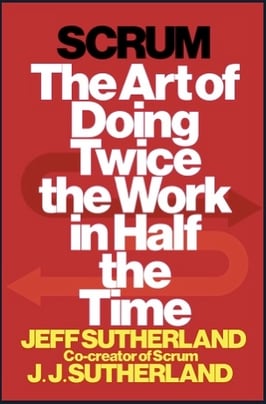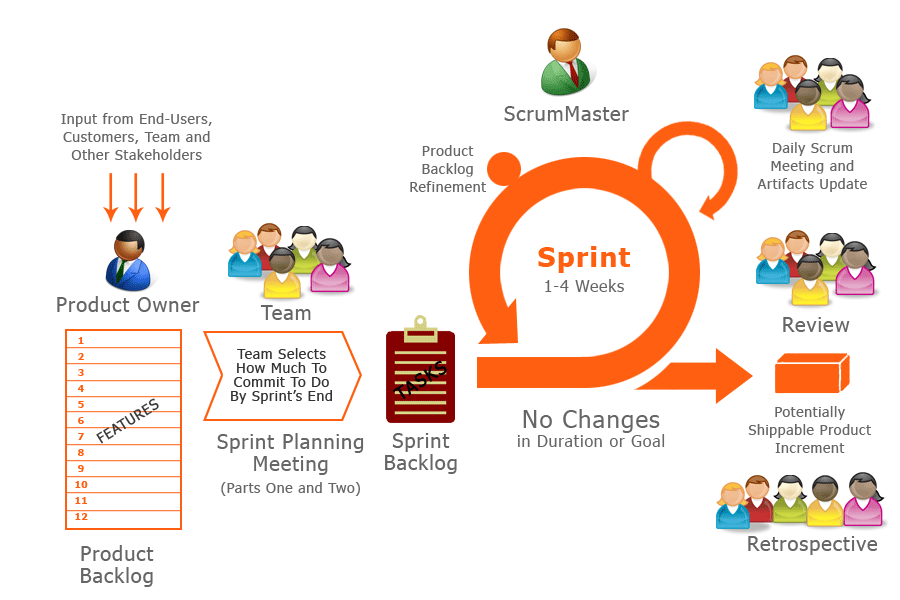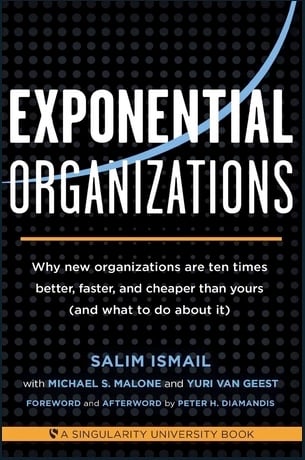Developing Team Efficiency
UPDATED: Change continues to unravel itself daily. Whether it’s premeditated like a goal you’ve been meaning to achieve or something that’s caught you by surprise such as a pandemic– the truth that change will always be with us still remains.
The choice between simply managing change and leading change, however, makes all the difference.
In a special interview, Scrum Co-author J.J. Sutherland talks about:
- The importance of embracing change and using it for growth
- How Scrum-oriented organisations are faring in the midst of drastic change
- The value of happiness and connection among teams in relation to productivity
- His new book The Scrum Fieldbook: Faster Performance. Better Results. Starting Now.
- Whether you are setting up a small business or running a multi-million dollar company, team efficiency is what sets you up for success.
In this week’s Knowledge Nugget, let us take a closer look at Scrum by Jeff and JJ Sutherland.
Software developer and Scrum co-author Jeff Sutherland says that the framework has its origins in the world of software development
The method has swept through a myriad of other industries where work gets done. Industry giants such as Google, Salesforce, Amazon, and even the FBI are utilising the efficient simplicity of the Scrum method.
Insight: The failure to enhance work processes impede progress within the organisation, and many businesses find themselves struggling when it comes to efficiency.
Data: A study from Florida State University found that productivity and performance are at their peak during uninterrupted 90-minute intervals. (Workgroups Da Vinci)
What’s the step change: Learn how to do twice the work in half the time.
Download the Knowledge Nuggets: SCRUM PDF to learn more.
What is Scrum and why is it called Scrum?
Scrum is the ground-breaking framework that focuses on business agility at an organisational scale. Its main emphasis is on teamwork, accountability, and a steady and consistent advance towards a shared goal.
Three Key Roles in Scrum
There are three key roles to fill in order to put the Scrum method in motion. Each of them has equally important parts to play in the success of the method.- Product Owner: The product owner serves as the key person. They come up with the ideas and define the product's key features.
- The Team: Made up of members who specialise in various tasks, the team often houses developers, writers, testers, etc. Sometimes, it is necessary for team members to fulfill secondary responsibilities to keep the process running smoothly.
- The Scrum Master: They directly oversee the team and are responsible for keeping the process as efficient as possible.
Key Documents in Scrum
With the roles in place, the following key documents act as a safety net and reference for the team to work without any problems and increase team efficiency of individuals.- Product Backlog: This is a list of projects and everything that needs to be achieved to execute the plan. It is known as user stories, and it changes in priority at every sprint.
- Sprint Backlog: The most important user stories go into the sprint backlog. These get ranked for size and get prioritised on the next sprint.
- Burn down Chart: This chart shows the progress of each user story. This chart should approach zero points as the user story reaches completion.
Key Phases of Scrum Workflow
- Sprint Planning: This phase is where the product owner, scrum master and the team converse and plan out every aspect of the sprint.
- Daily Scrum: A quick meeting where the team discusses completed projects and what they are working on at the moment. This is technically a quick huddle.
- Sprint Review: The sprint review usually occurs at the end of the sprint, and the team discusses what they can improve on the overall process.
- Sprint: It is a one to four-week time box. Throughout each sprint, all of the work decided upon during the sprint planning will be worked on until completion.
The Scrum Workflow
We now know the key aspects of the Scrum workflow. The following is a quick summary of the Scrum work process.

1. Product Backlog
The product owner builds a list of the product's key ideas and features. They prioritise the list and update the team on the top items.
2. Sprint Planning
This is the phase where the product owner and the scrum master discuss and rank the user stories. Through this process, they will be able to decide what will go into the next sprint.
3. Sprint Backlog
The end result of the sprint planning is the sprint backlog. These are the user stories that the team has decided to work on. Based on the discussions of the sprint planning meetings, the team can now stay focused on the overall work process.
4. Sprint
As it was stated earlier, the sprint is the one to four-week period where the designated tasks are worked on. The outcome of the sprint is a potentially shippable product.
5. Daily Scrum
Within the time-span of each sprint, the daily scrum takes place. During the daily scrum, the team conducts a stand-up meeting where they discuss completed and unfinished tasks.
6. Sprint Review
This is where the team presents the end product to the product owner. During this stage, the team evaluates how they could improve the overall process. This workflow should be followed for every sprint.
Summary
Scrum is the Bible for agility in practice. Its primary premise is how to be productive in a changing and uncertain world, how to beat complexity by improving team efficiency.
The first key principle from Scrum is that agility is really lean. While Scrum is an operating model, it is still rooted in the agile manifesto.
One of the key values in the agile set, is that the team should understand the principles of why we’re doing something, rather than get stuck on what we’re doing. It states that we should value collaboration over contract negotiation. We should value responding to change, rather than sticking to the overall plan.
The second key value is the daily huddle. We should conduct our meetings with a scrum board to make the process more efficient. Huddles should last no more than 15 minutes. The daily huddle is a core principle that allows team members to commit to duties and ask for support from fellow team members.
The third key value is momentum. When it comes to intention, we want to make sure that the team is improving. That it gets faster and more effective, and that feeling of momentum rises up in the team.
Small teams and four-week cycles are important. The Scrum cycle closes at the end of every four weeks and looks to improve the capability and structure of every team.
The fourth key principle looks at the science of productivity. It states that a happiness survey is one of the greatest predictors of team performance.
Overall the Scrum method has proven itself as one of the most innovative organisational frameworks. Since its debut in the software development industry, its influence has transcended in research, sales, marketing, advanced technologies, and even in your business today.
Download our Knowledge Nugget on Scrum and learn to do twice the work in half the time and improve team efficiency here.
















